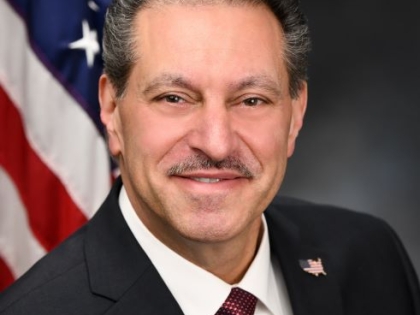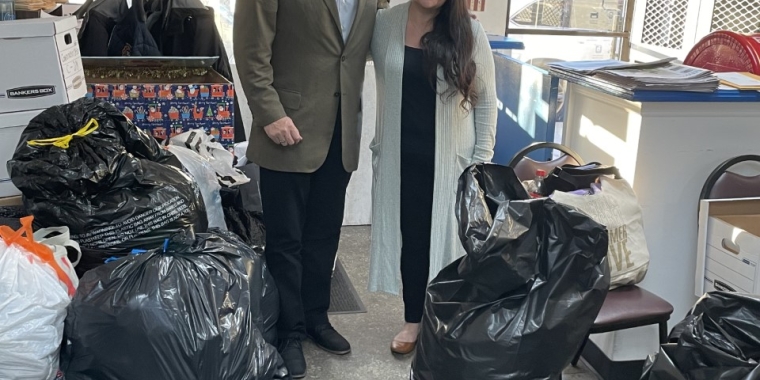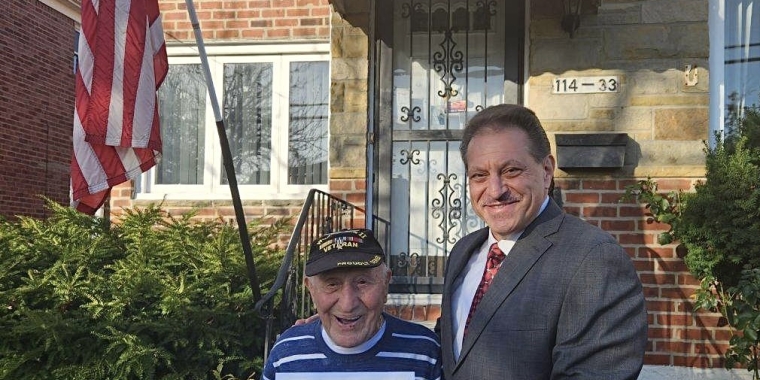
Addabbo: We’ve Got to Get Back to Work in Albany
Joseph P. Addabbo Jr
October 31, 2011
-
ISSUE:
- Session
Queens, NY, October 31, 2011 – NYS Senator Joseph P. Addabbo, Jr. (D-Queens), reports to his constituents that while the legislative session that ended in June was very successful, there is still much work left to be done in Albany and that is why the senator believes the state legislators should return there to finish its business. With no current timetable to have the lawmakers return to Albany before January, Addabbo feels the state legislature needs to deal with a few important issues: an update on the budget that was passed on time in April; the unfinished business of redistricting; halting hydrofracking until the DEC report is completed and evaluated; and moving the effort along to allow full casino gaming in New York State.
Pertaining to the state budget, on August 2, the NYS Division of the Budget (DOB) released its State Fiscal Year (SFY) 2011-12 Financial Plan First Quarter Update. Since the release of the Enacted Budget Report on May 6, the DOB has not made any fundamental revisions or changes to the State’s Financial Plan. The DOB projects that the current state budget will remain balanced for the duration of the State Fiscal Year and projects the General Fund will close out the current year with cash balance of $1.737 billion, which is the same level as projected in its Enacted Budget Report. For the first quarter, revenue collections for the state are running higher by $809 million than projected on May 2. Through June, General Fund Personal Income Tax receipts are above projections by $489 million. Also, business tax collections are $232 million higher than projected through June. State sales tax collections were slightly above target through the first quarter. The DOB expects aggregate collections to weaken during the remainder of the year. As for state spending, through June, State General Fund spending is lower than originally projected on May 2. The vast majority of this difference was caused by timing delays, processing issues and a reclassification of lottery aid payments. Through the first three months of the fiscal year, state spending was $1.194 billion below cash financial plan targets set in May. On an All-Funds basis, actual spending totaled $31.751 billion, which was $1.767 billion below target. Governor Cuomo indicated in mid-October that despite the problems on Wall Street and their potential impact on next year's state budget, he remains committed to increasing state education and health care spending by 4% next year. The current budget provides for the increases and when asked, Cuomo said he expects they will be part of the budget he recommends in January.
While acknowledging the U.S. economy is still recovering slowly from recession, Addabbo contends that the DOB might have underestimated revenue projections in the current state fiscal year. Employment and income growth in the NYC region, as well as the commercial real estate market, could be showing signs of recovery. Tourism in NYC remains strong and the senator still expects that state revenue collections will be higher than the DOB’s projections for the fiscal year. Addabbo noted, “The state legislature should ensure the balanced stability for the remainder of this year’s state budget, while also preparing to meet our fiscal obligations for next year.” The senator pointed to the opening of Resorts World New York; the casino is expected to put more than a million dollars a day into state coffers. Recent polls have the Executive and the Legislature in agreement with most New Yorkers that the state should allow full casino gaming by constitutional amendment followed by a referendum on the ballot for the public to assent. “Our state should no longer allow neighboring states to gain all that lost gaming revenue when its potential to affect our economy, education and local communities is seen as a more positive than negative proposition by our people,” Addabbo stated.
On the topic of redistricting, Addabbo, who previously signed a pledge to reform the redistricting process, believes that the practice of politicians choosing their voters and district lines must come to an end. As the redistricting process has begun with hearings across the state, state legislators are apparently in agreement to implement a sensible law that counts prisoners in their home districts instead of in counties where they’re imprisoned. And, the governor has been in talks with both the Senate and Assembly about complying with the two-year-old federal law that would result in moving party primaries to as early as June. Governor Cuomo also would not say if the federal government should grant another waiver for New York on the MOVE Act, which requires primaries be held 45 days before an election in order to give more time to military and overseas voters.
Addabbo contends that while redistricting is the state’s top immediate 2012 issue, it should be dealt with by the end of this year. It involves the drawing of election district lines based on new U.S. Census data for both the state legislature and New York’s congressional delegation. The task must be completed in time for the 2012 elections, which means finishing the lines by next spring so that the ballot process can get underway. According to the senator, the importance of a fair and transparent redistricting process cannot be underestimated. The voice of the voters, fair and equal representation, and governmental negotiation of next year’s legislative session are all affected by the process. Traditionally, good-government and watchdog groups routinely criticized the previous redistricting processes, saying it created gerrymandered and unfair districts. Governor Cuomo introduced a bill to give the task to an independent commission, which won the applause of good-government groups and some state legislators.
Since the end of the legislative session, state lawmakers launched a series of statewide hearings on redistricting to develop their own plan in Albany and in New York City. Governor Cuomo vowed to veto any plan that looks like traditional gerrymandering -- in which district sizes vary more than 1 percent from the mean – 305,000 residents for Senate districts and 126,500 for Assembly. Currently, districts can vary in population by plus or minus 5 percent. That means some Senate districts have up to 318,484 residents and some as few as 290,925. Critics say the leeway allows lawmakers to protect incumbents during election years. “Independent redistricting is necessary for the process to become more transparent and equitable and for our government to become more representative and responsive to our people. We must get back to Albany and deal with this important issue,” Addabbo urged.
Addabbo also contends that the governor should move with caution and not act too hastily in issuing permits to energy companies that would allow drilling in the upstate watershed. The Assembly held a public hearing in Albany early in October on the environmental impact of hydrofracking, or drilling to release natural gas from dense rock using high volumes of water, sand and chemicals. The NYS Department of Environmental Conservation (DEC) estimates "fracking" could create 37,000 jobs and generate $31 to $185 million a year in added state income taxes, which has caught the governor's attention to lean toward supporting such drilling. Recent polls have shown most New Yorkers, especially downstate, are against the process that endangers the drinking water of over nine million people. The DEC released a draft environmental document on September 7 and will hold a public hearing in Manhattan on November 30. Public comment will be accepted until December 12. New York has proposed a ban on hydrofracking in watersheds and aquifers that supply drinking water to New York City and to Syracuse and in other sensitive areas, but would allow hydrofracking in a dozen other counties along the rich natural gas field known as the Marcellus Shale.
Notes Addabbo, "The upstate area has been more hard-hit economically than downstate, so fracking is seen by many upstaters, and the governor, as a boost to that region. In 2010, I supported a drilling moratorium until the EPA study was completed and I still say we need complete assurance that the process of hydrofracking will keep our watershed safe and protected from contamination and other environmental hazards--especially enforcing compliance with the ban on drilling within 1,000 feet of the aquifers.” Addabbo feels there is no need to rush into drilling, or permit energy companies to drill inside the watershed boundaries, as the governor seems almost ready to do.
“These important issues all will have a great and lasting impact back home in my district and for the entire state. I intend to continue to fight for independent, nonpartisan redistricting, for prohibiting hydrofracking to protect the water supply for our residents, and to ensure we have a state budget that addresses the needs of our people,” concluded Addabbo.
# # #
Share this Article or Press Release
Newsroom
Go to NewsroomAddabbo To New York Jets: Come Back To Queens
November 30, 2022
Women's professional clothing picked up from Addabbo's office
November 30, 2022

Addabbo honors WWII veteran from South Ozone Park
November 16, 2022
